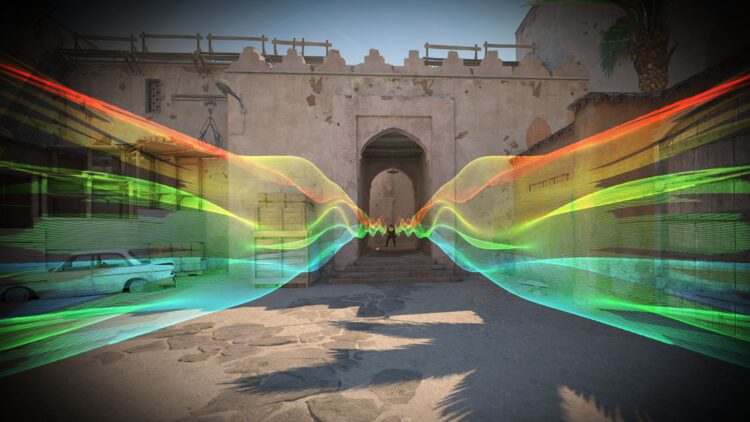Counter-Strike: Global Offensive (CS-GO), no one expected to be brought back, or at least no one outside of a neural network. An AI-powered diffusion model known as “DIAMOND” has managed to simulate the famous Dust II map, running purely off a single RTX 3090. However, remember that before you grab your mouse and keyboard in excitement, the gameplay is not eSports ready. The AI-simulated version runs at just ten frames per second (FPS), making it far from the game’s fast-paced, competitive CS experience fans have become used to.
Recently, Eloi Alonso, who played a major role in this project, tweeted a video of the simulation, highlighting the wonderful achievements and flaws of this AI-generated version. While not perfect, this preview is a window into the ever-changing, invisible hand of artificial intelligence in gaming—this is more of a tech demo than an actual playable experience.
There are still many limitations of our model. We’re sure you can find more yourself by interacting with the model.
However, we expect the world model would continue to improve by scaling up data and compute, given our dataset only amounts to 87h of gameplay.
(4/n) pic.twitter.com/EnqWiveUFL
— Eloi Alonso (@EloiAlonso1) October 11, 2024
AI’s take on Dust II: Impressive but far from flawless
This project used “DIAMOND” Diffusion for World Modeling and was trained using images from Dust II matches. The only thing it learned was the ins and outs of CS, which it used to build its version of the game from scratch. However, when running this AI-driven version of Dust II on RTX 3090, it only got 10 FPS. – a performance you wouldn’t want to play competitively.
The technical achievement is hard to deny, but the glitches in this AI-generated world are fascinating and telling. Early results of the model do not fully reproduce the game’s mechanics, resulting in unexpected and often bizarre behaviors. An example is that the AI will treat each jump as an infinite jump (except for the first one) until it hits the ground and will do so without considering gravity or any collision rules from Source Engine. Weirdities abound; also, with its weapons, which change form in different light conditions, and in some cases, players can phase into or through walls.
However, scaling would not solve everything, such as unexpected behaviors due to the limited memory of our model.
This limitation interestingly enables the model to compose multiple jumps in a row by generalizing the effect of a jump on the geometry of a scene!
(5/n) pic.twitter.com/SraKvMtfOA
— Eloi Alonso (@EloiAlonso1) October 11, 2024
These “hallucinations” expose the limitations of AI models, as they essentially guess how to simulate game behavior rather than execute it with the precision of a game engine. While it is certainly not quite the Counter-Strike experience most gamers are used to, it demonstrates how far AI technology has come and how far it still has to go.
Why play the simulation when you can play the real thing?
If you are curious about trying out this neural network version of Dust II, it’s nice to consider whether the novelty is worth the trade-offs. Certainly, watching AI re-imagine CS attempting to replicate the game is a flashy technical demo, but the free, smooth-running, high frame rate Counter Strike 2 on Steam should be what most players spend their time with.
However, this work with DIAMOND highlights many questions that the future of AI in gaming will have to face. For now, neural network-powered games aren’t likely to entirely replace traditional ones, as these demonstrations show that AI may impact future games’ development. But when it comes to such advancements, we should take care of them because you can use AI to recreate copyrighted games that include CS, and there are ethical and legal ramifications.
Ever wanted to play Counter-Strike in a neural network?
These videos show people playing (with keyboard & mouse) in 💎 DIAMOND's diffusion world model, trained to simulate the game Counter-Strike: Global Offensive.
💻 Download and play it yourself → https://t.co/vLmGsPlaJp
— Eloi Alonso (@EloiAlonso1) October 11, 2024
Eloi Alonso and his team have shown us what AI can do in gaming, but it’s still in the early days. Dust II is more of a tech curiosity than a game you can play. AI can simulate games but still require guesswork and cannot compete with game engines. We don’t know what games AI can make. One thing is certain: As these technologies develop and are used in gaming, we must create ethical and legal pathways. The idea of AI “porting” entire games is exciting and concerning. It will be interesting to see how developers balance innovation with responsibility. The real Counter-Strike is still your best bet if you want smooth gameplay with responsive mechanics. Watching a neural network play Dust II is intriguing but flawed. It shows what the cutting edge of AI tech might look like. If you want, you can run this project on GitHub.
Image credit: CS2





